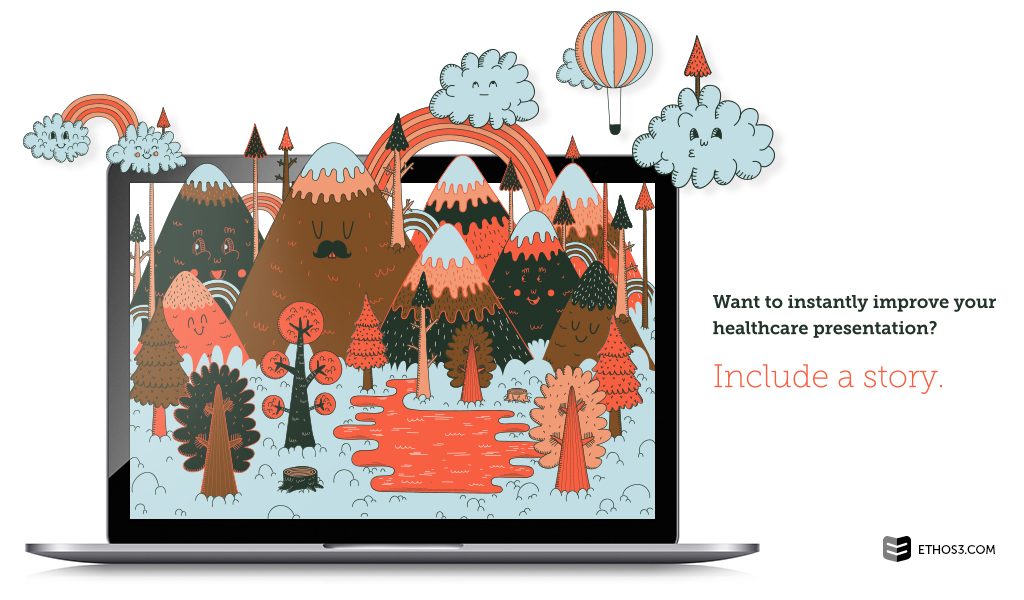Of our many clients with many different presentation needs, medical industry clients present to us a tricky design challenge. These presentations are often technical in nature and require a lot of content to live on only a few slides. Even though they might be pitching to an investor crowd or a non-industry savvy audience, they still need to explain complicated medical procedures or devices.
If you’ve found your way here, you probably already have a full presentation that needs some work. Is it cluttered? Poorly designed? Or is it simply lacking that special “sparkle” that a presentation should have?
Here are a few of our best tips for healthcare presentations, keeping in mind our many years of experience with these technical and challenging decks. Without further ado…
Design Advice for Illustrations
Many healthcare presentations come equipped with complicated, realistic illustrations of organs, implants, or procedures. For example, a deck talking about a new heart surgery valve may include a textbook-quality illustration of the organ. If you don’t feel like these fit within the overall design of your existing presentation, consider updating the overall color scheme to correspond with the illustrations for a more cohesive feel. Or, you might consider using a cover overlay on the illustration in order to match it to your current template. Even though the styles may differ, it’s important to have a common theme of color throughout.

Stories, Stories, Stories
When a healthcare presentation is so focused on the specifics of a medical breakthrough, it tends to forget the human element that makes that breakthrough meaningful. Our advice for medical decks is to include a real-life or fictional story to give the solution context. A story might be the difference between a deck that confuses an audience and a deck that makes investors grab a Kleenex. Start or end your deck with a story; the difference will be huge and very compelling.
Hit “Backspace” on Jargon
What if an IT employee tried to explain to you in five minutes how your entire computer worked? Chances are you would be lost unless you had a similar background or equivalent experience. This same “I’m lost!” flaw is true of so many healthcare presentations. When doctors and PhDs try to explain a complicated topic, they use the complicated language that they are accustomed to in order to explain it. In order to simplify your message and improve your talk, delete any and all medical jargon. Replace it with clearer language or spend time explaining the talk from the ground up. Your audience will thank you.
Simplify Credibility Statements
In the scientific community, proof is essential. For a study to be taken seriously, it needs to show evidence of success in multiple arenas, backed by enough credibility statements to drown in. The problem with this level of “proof” in a healthcare presentation is that often times, the audience only needs to see what is absolutely essential. Only use enough credibility and backing data to make your point powerful, then consider moving the rest into the appendix or a handout to go along with your talk. It doesn’t matter where all of your doctors were educated or the specific things you’ve worked on in the past five years; all that matters is that you say what you need to say and back it up once.
Want to read more presentation content and design tips for when you have a complex topic to deliver? Check out these related articles!
Simplify Your Language To Sound Smarter in Presentations. Here’s Why.